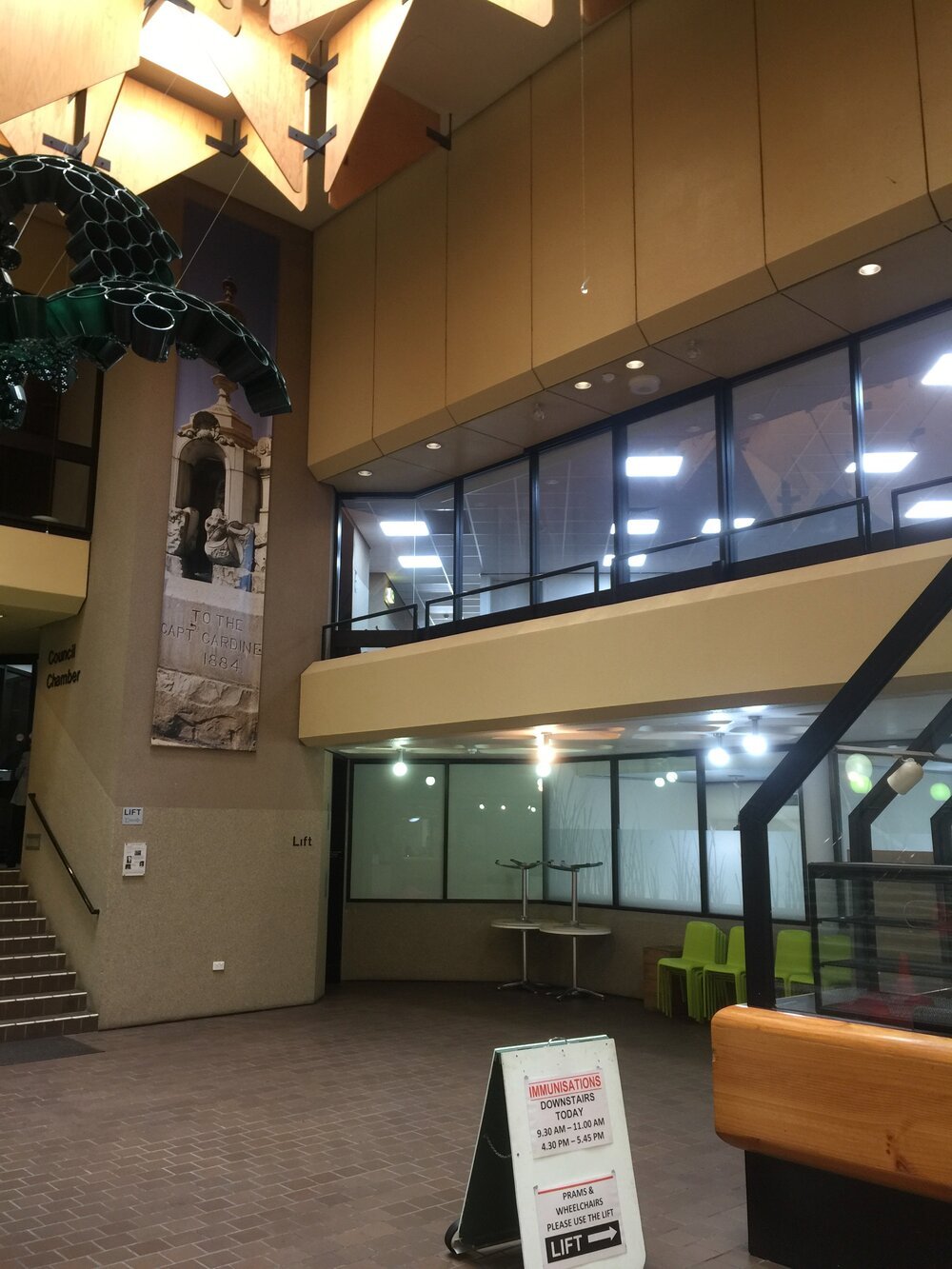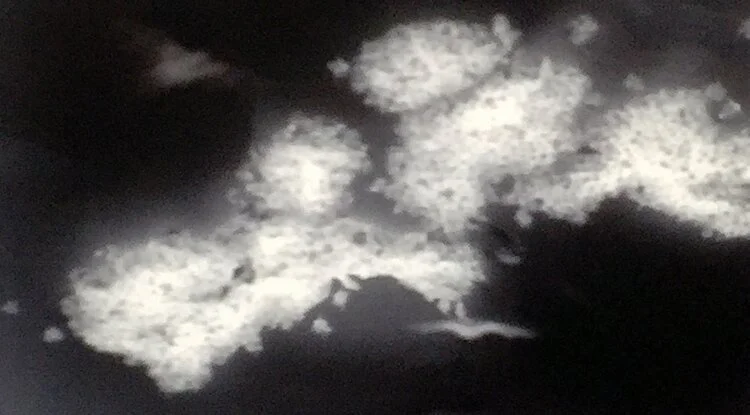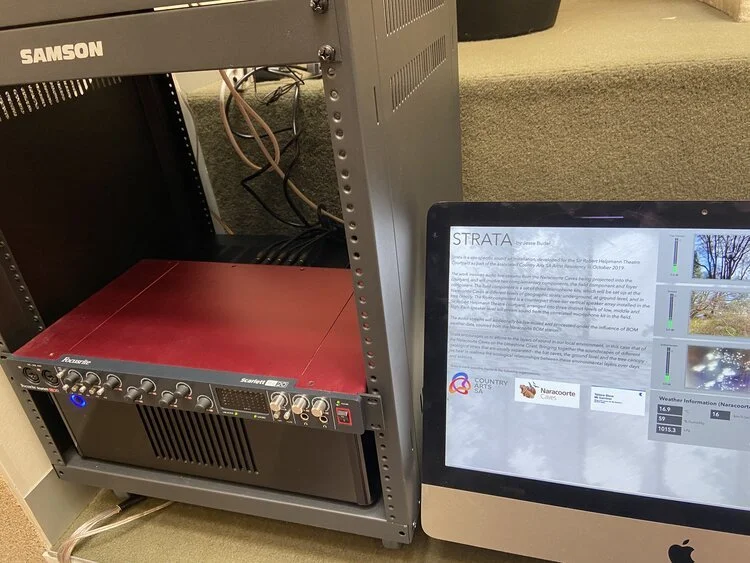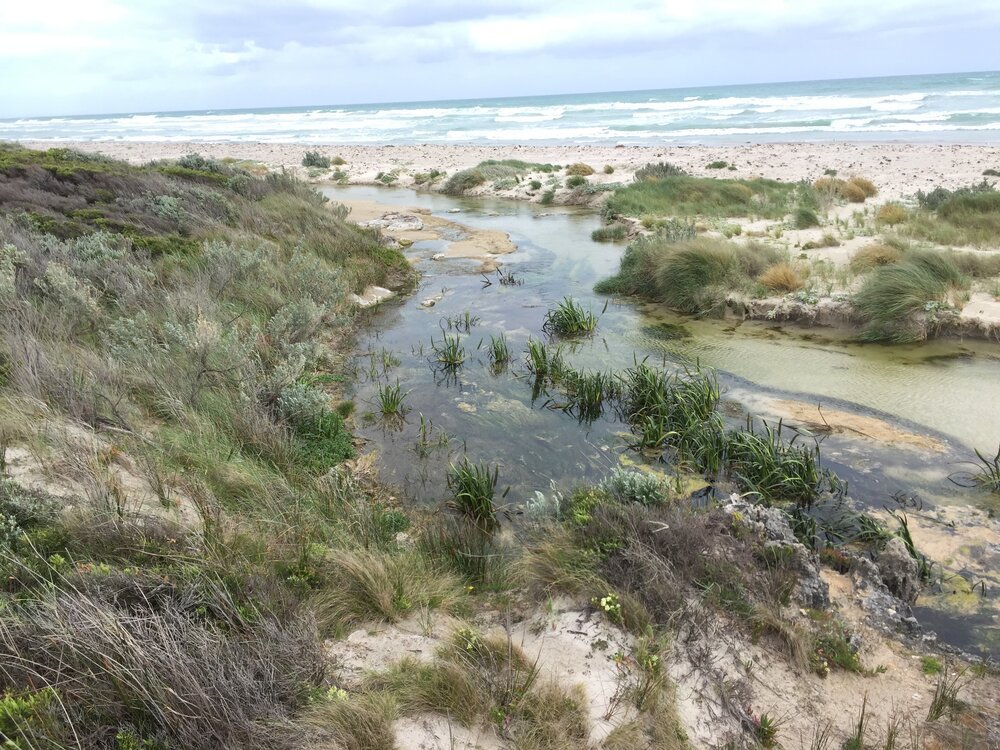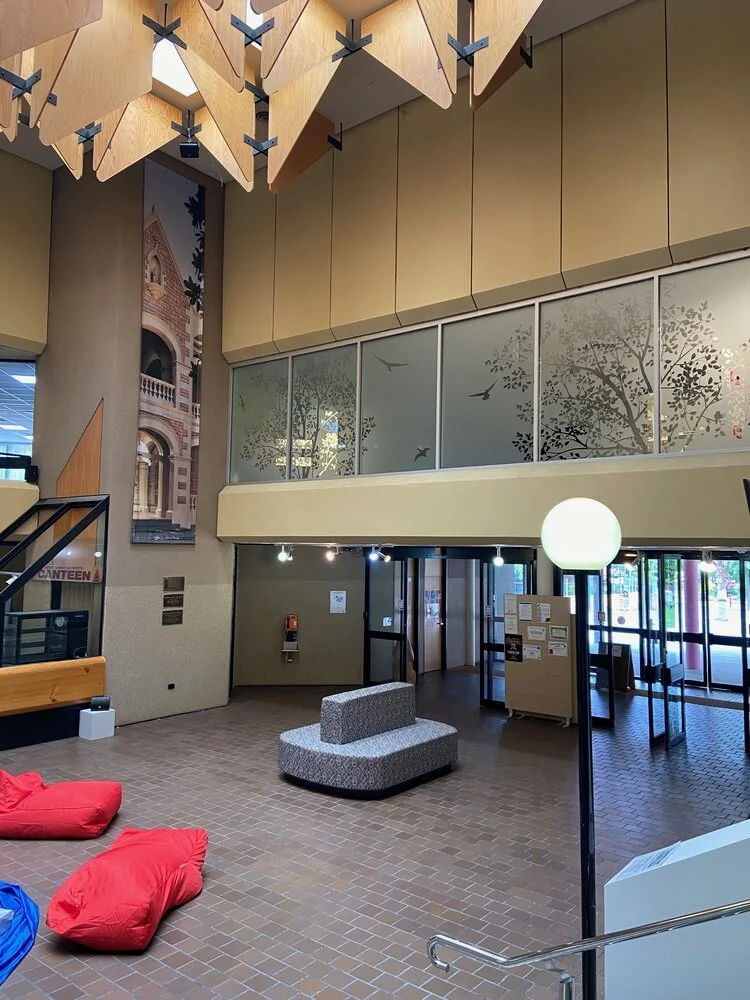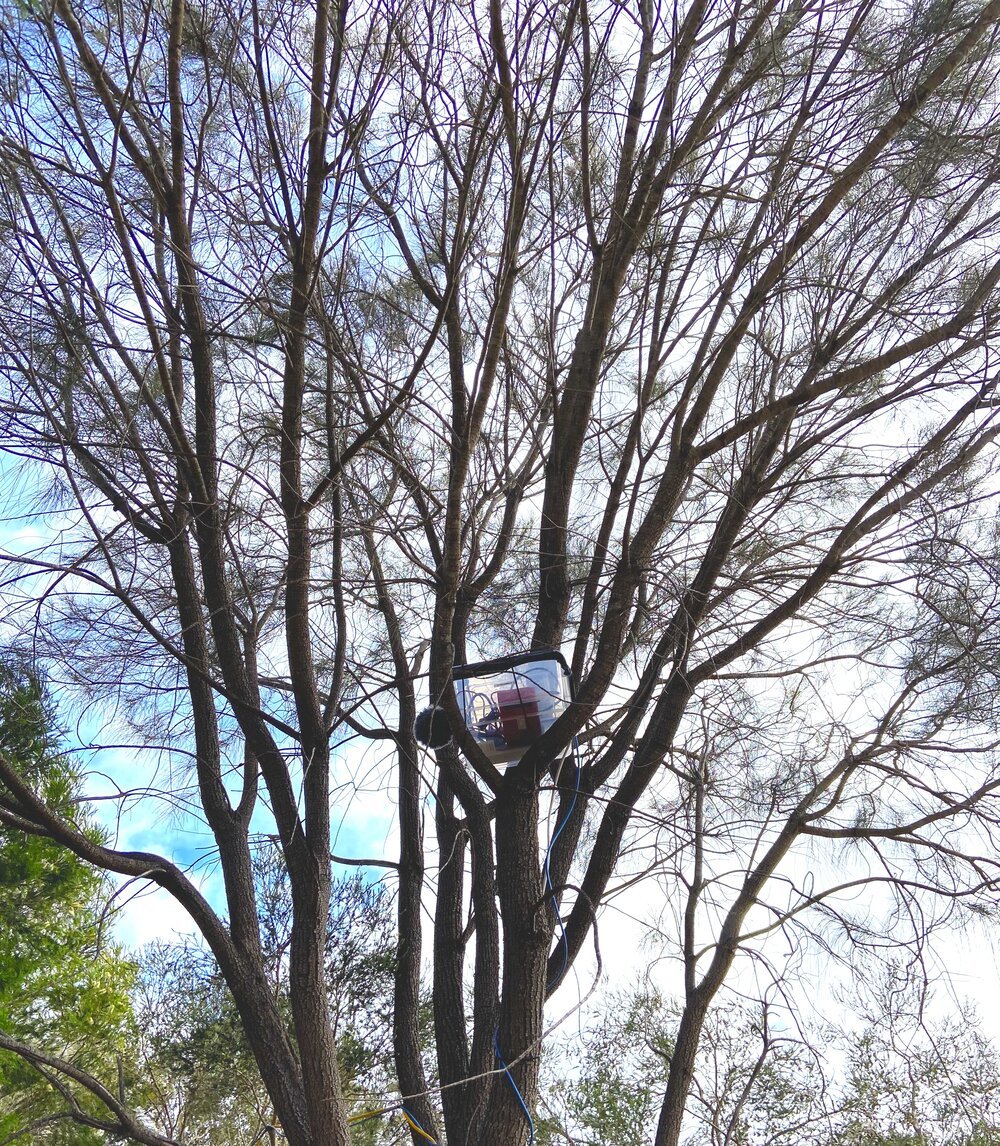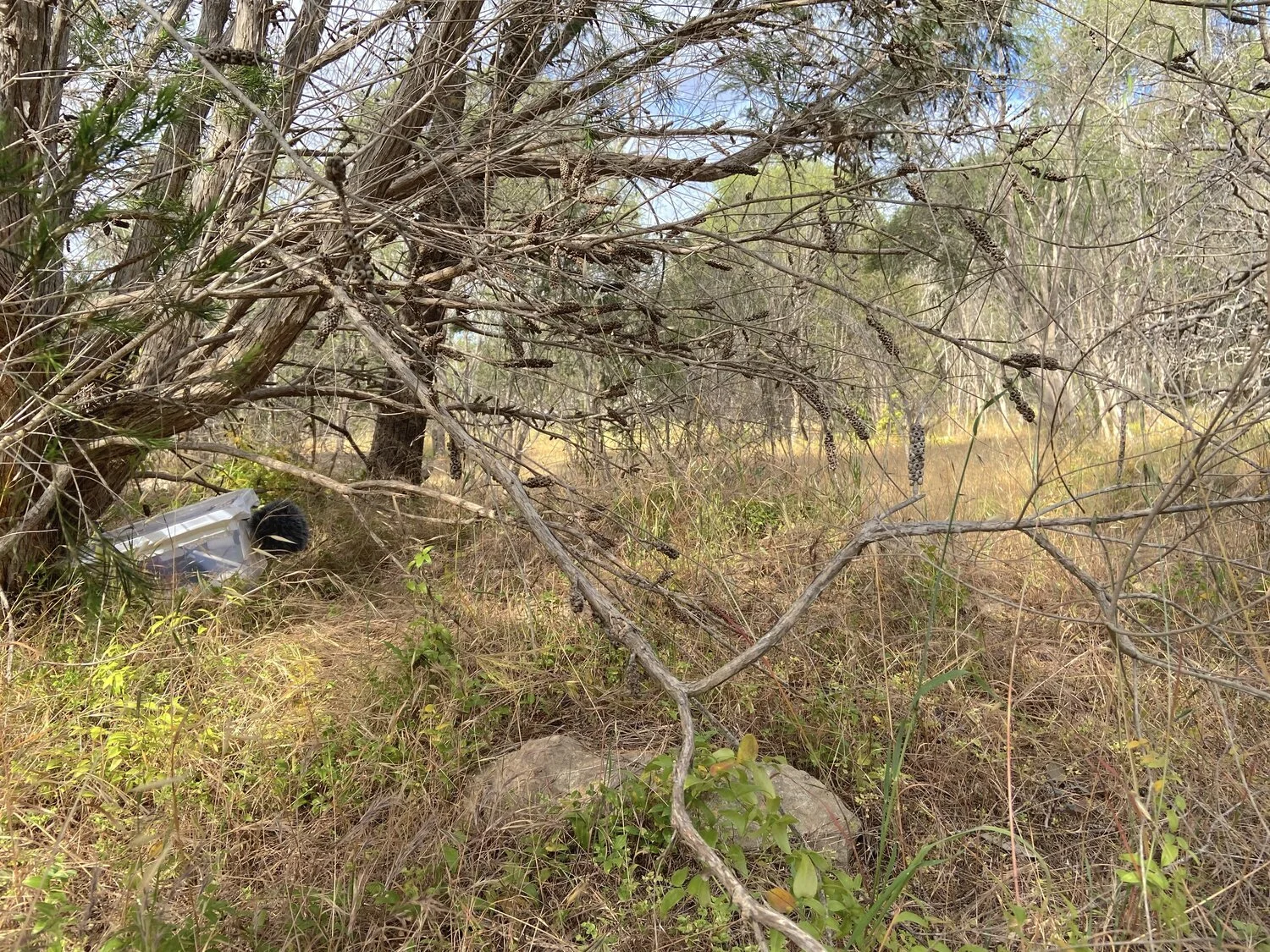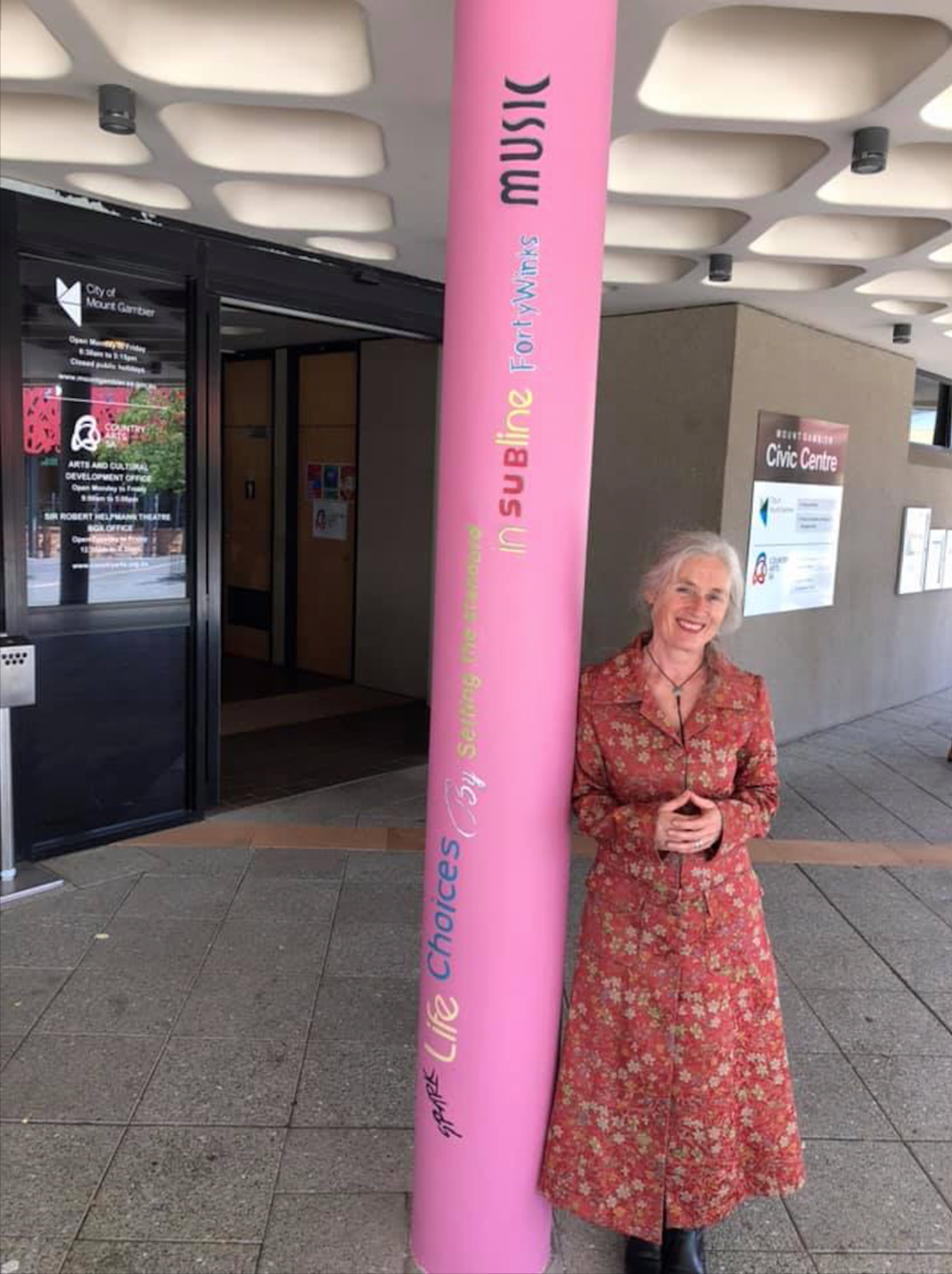Land Arts in Limestone Coast (Part 1): Strata at the Sir Robert Helpmann Theatre
Hi everyone,
This is the first in a series of posts about my recent activities in the Limestone Coast between October to December, comprising an artist residency at the Sir Robert Helpmann Theatre in Mount Gambier, as well as a Land Arts Retreat with 10 artists from around Australia and abroad. The first two posts focus on the residency and retreat respectively, whereas the final post will consider broader reflections on my time in the region.
Before delving into the residency, it’s worth mentioning that South Australia’s South East is a significant area for me. Born in Bordertown, I spent my first five years growing up in its rural surrounds, making trips out to aunts and uncles situated in Kingston SE, and to family friends’ farms further south. As will become apparent, the opportunity to develop work for this site was personally very rewarding, and my time in the Limestone Coast has been quite impactful in further developing, altering and renegotiating my relationship and understanding of this place.
In partnership with SA Power Networks and with support from Arts SA, Country Arts offered two residencies opportunities at the Sir Robert Helpmann Theatre in late 2019, the callout for which was to “re-energise traditional spaces in non-traditional ways…, considering at all the spaces that make up the theatre and create contemporary work in any medium that would be unexpected, that opens the public’s eyes [, ears] and minds to seeing the spaces in new ways, taking inspiration from the character of the local community and environment.”
Having completed my postgraduate studies recently (which involved multiple site-specific sound art installations, all involving pre-recorded sound), I’ve been keen to work with emerging technologies in acoustic ecology and ecoacoustics, particularly live-stream systems. This involves setting up remote field kits with microphones, audio equipment and processors and some form of internet connection, streaming to sites such as Locus Sonus, an open-source global live-stream site. Subsequently, these streams can be tuned into (not unlike internet radio), listened to anywhere in the world.
Having visited briefly Mt Gambier a couple of times previously, I left with a strong impression of both the local topology (with distinct strata of the subterranean, ground level, and mountain peaks and tree canopy) and the Theatre space, with its stark brutalist facade and expansive inner courtyard. In thinking about a potential work for the residency, I noticed parallels in the vertical layering of the local environment and theatre courtyard. This, combined with live-streaming of acoustic environments, led to an idea of situating a live-stream microphone array in the field - set up at three levels of the subterranean, ground level and canopy - and projecting those streams back into the theatre space with three levels of speakers at low, middle and high tiers. Receiving one of the two residencies, I began developing the work in early October.
Cross section of the Theatre Courtyard: ground, mezzanine and roof. This area was decided against - difficult to access the mezzanine, and the reed frosting on the ground-level glass didn’t suggest ‘underground’.
During my first week, reconnaissance was the main task, attuning myself to place and learning about specific sites that might be appropriate to set up the live stream kits. Monday 7th saw me travel along the Coorong and lower South East Coast, an area familiar to me Travel along the Coast.
Tuesday 8th October was an opportunity to settle in, meeting various folks at the Theatre and Council - amongst them Country Arts staff Merilyn De Nys and Monica Hart, and theatre manager Frank Morello - as well as beginning to order equipment for the work. Part of the preliminary discussions at the Theatre were about where to place the speakers: originally, I envisaged that audiences would be able to move between ground and mezzanine levels for different listening perspectives on the work, but logistics of providing ongoing access to the mezzanine were difficult. Additionally, the glass frosting at ground level features a reed bed, which didn’t quite work as a visual counterpart with the tiered concepts of having subterranean sounds on ground level. An alternative arrangement would have to be found.
Wednesday 9th saw me visit Tantanoola Caves, a dolomite cave recognised for its extraordinary cave decorations (speleothems), including juvenile straws and older stalagmites and stalactites. Spending time listening to the caves was a little less captivating - though the guide remarked at the acoustic properties and the performances in the space, the acoustic environment mainly consisted of water drops throughout the chamber, with minimal biophony (sounds of living organisms). The surface level and overhead clifftop wasn’t much better, with traffic sound from the nearby highway overwhelming the ambience.
Infrared image of southern bent-wing bats in Bat Cave at Naracoorte Caves National Park.
The following day, Thursday 9th, I went to Naracoorte Caves, 100kms north of Mount Gambier, eager to find whether this might be a more appropriate acoustic site. Several tours of various caves systems, including Bat Cave, Blanche Cave, Alexandra Cave and Victoria Fossil Cave, as well as walks around the surface level revealed a quieter, more suitable set of soundscapes to work with in the theatre courtyard. One guide, Gavin, was particularly helpful in drawing my attention to various sonic attributes and technologies of the park, including an AV monitoring station in Bat Cave, monitoring the now-breeding bat colonies. On the Victoria Fossil Cave tour, I also serendipitously met Pamela and Vasilio from the Riverland, who I kept crossing paths with for the next couples days, and shared multiple mutual friends with.
On the return trip to Mount Gambier, I visited Bool Lagoon, a remnant example of the Limestone Coast’s landscape prior to the implementation of successive drainage systems. A refuge for migratory birds, the October dusk chorus sang resplendently for the couples hours I sat recording.
On Friday 10th, I met with Nick McIntyre, manager of the Naracoorte Caves, discussing setting up microphones at the Naracoorte Caves. We decided that Bat Cave, with its pre-existing infrastructure, would be best for me to take a split of the microphone feed from (thereby avoiding disturbing the colony during their breeding season), with ground and canopy level microphones situated nearby. In the afternoon, I went to Mount Schank, a dormant volcano erupting almost 5000 years ago, taking in the awe-inspiring views of the crater from a hiking trail on its rim, and surveying the surrounding land as impacted by drainage, agricultural activity, forestry and quarrying over the past 150 years.
Mt Schank
The second week, by contrast, was mainly focused on preparing for the installation of the microphones and speakers.
Following an overnight stay in Robe on Monday night, Tuesday 15th involved collating equipment ordered the week before and assembling the microphone kits as well as installation equipment. The recipe for the streaming kits was drawn from a list of recipes developed by SoundCamp, a UK-based non-profit that often works with live-streaming technology. For this work, I used Recipe 4, which includes:
for the surface level kits: Rode M5 Condenser Mic (covered with dead kittens) - a variation on the microphone capsules advised
for the subterranean kit: an XLR Split from the Naracoorte Caves management's pre-existing AV infrastructure (infrared video coupled with microphone).
Ethernet internet connection
For the installation itself, the setup included:
3 tiers of stereo speakers (Krix Aquatix) set up on ground, mezzanine and roof levels of the theatre courtyard.
iMac 2012, running a standalone app for the installation developed in MaxMSP.
The installation equipment as setup in the Sir Robert Helpmann Theatre
One of the challenges of the work was having reliable internet infrastructure for both uploading the streams from the microphone kits, and downloading at the Theatre. In addressing this, I met on Wednesday 16th with Joe Dunning from Telstra Mount Gambier, who was able to provide two Netgear Nighthawk mobile routers for both sites.
The following days, Thursday 17th and Friday 18th, were spent doing preliminary tests on the kits, troubleshooting software and hardware difficulties, and testing the Max patch software that the installation would run on. A visit to the immaculately clear Piccaninnie Ponds, a coastal wetlands fed by freshwater springs, kept me grounded all the while.
The coastal stream discharging from Piccaninnie Ponds into the Southern Ocean
Throughout the week, I had also been reconsidering how to set up the speakers in the courtyard. Spending some time in the space, I noticed that the frosting on the glass overhead of the Theatre’s entrance had images of trees and birds, a much better counterpart to the notion of the mezzanine as ground-level. As such, I decided to pivot the speaker setup 90 degrees, placing the speakers on the entrance side, and doing away with the idea of audiences listening from the mezzanine level.
Entrance to the Theatre courtyard, where the speakers ended up being positioned.
In my last week, efforts moved towards the installation of the work. Following another overnight stay in Robe, I arrived on Tuesday (22nd) morning to a scissor lift in the Theatre courtyard. The first order of the day was to take down the previous work, Pine Tree Green, by Jane Skeer, before mounting the roof speakers and cabling. This work continued on Tuesday and Wednesday (23rd) morning, setting up and testing the remaining speakers on the mezzanine and ground levels.
The remainder of the week was spent preparing for the installation of the microphones at the Naracoorte Caves. Due to a number of challenges that emerged - software bugs requiring ethernet access, and challenges of routing cabling at the Bat Conservation Centre (requiring the creation of some access points between inside and out), the microphones weren’t installed later until a later trip between 5 and 6 December, whereupon everything went smoothly with setup. The microphone streams can be heard live now on the Locus Sonus Soundmap, concentrated in a cluster in the Naracoorte Caves area (you will need to zoom in to see each stream).
On December 11, the final piece, Strata, launched, alongside fellow resident artist Cynthia Schwertsik’s Town Thoroughfare Readings. Cynthia drew inspiration from her two residencies in the South East, creating nonsensical sentences with phrases, words and symbols taken from around the city of Mount Gambier in an effort to encourage people to create their own meaning from the jumbled phrases. The words have been placed on the pillars outside the main entrance to the centre along with bright colours that reflect the environment.
Cynthia Schwertsik: Town Thoroughfare Readings
Jesse Budel: Strata
In her catalogue essay of Strata, Linda Marie Walker summarises the work as follows:
The low-strata are visible if we travel down; the middle-strata are visible in all directions; the high-strata are visible if we look up through trees, mists, rain, clouds; microphones are placed under the ground, on the ground, and above the ground; sounds are interconnected; they form a specific individual (inter)dependent community or fusion of existence.
This soundscape, STRATA, has a life of its own, as does the composer and the listener. Sound has travelled through the atmosphere, across the world – from Naracoorte to France to Mount Gambier. We are here to hear, if we wish, an artwork, as it criss-crosses a foyer’s space/time, mixing with whatever other sound/noise is present at any moment, and momentarily; one can sense the affects of time, both immediate and infinitely distant, as the event of sound itself.
I’ll reflect more on this work myself in an upcoming post, but for now I’d like to thank everyone who assisted in the development in of this project, including:
Merilyn, Monica, Frank, Jo and the Sir Robert Helpmann Theatre staff
Mount Gambier Council staff
the Naracoorte Caves team, amongst them Nick, Tom, Andrew, Gavin and Decima
Joe Dunning and the team at Telstra Store Mount Gambier
Linda Marie Walker
Grant Smith from SoundCamp
The Locus Sonus team
For more information on Strata, click here.
An article in Mount Gambier’s Border Watch can be found here.
The Sir Robert Helpmann Theatre Residency and Land Arts Retreat project is made possible thanks to the following organisations:

